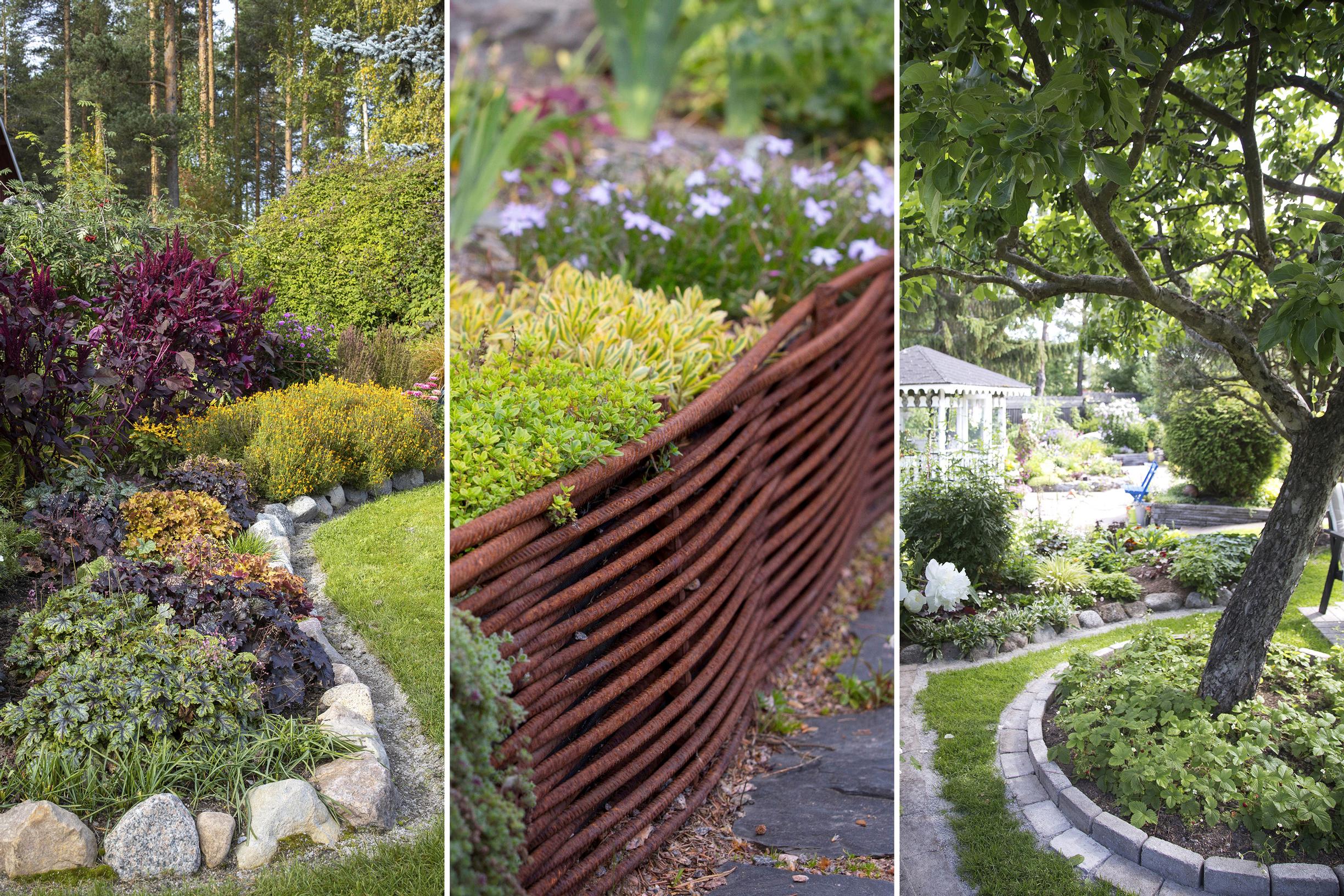
12 stunning flower bed edging ideas with bricks, willow, metal, or stone
Edging your flower beds makes maintenance easier, enhances your garden’s character, and adds structure. Find inspiration for flower bed edging.
1. Use stones from your own yard
Natural stones fit many garden styles. When arranged in a row, they gracefully wind along the edges of your plantings like an undulating string of pearls. Define the edging further and make lawn care easier by separating the lawn from the stone border with a narrow strip of gravel.

2. Grow a living edge
Border a bed of tall flowers with a low, neatly trimmed hedge. In colder climates, consider hardy varieties like Canadian boxwood or the low ‘Repandens’ European yew, but remember to protect them from harsh spring sun during their first few years. Alpine currant and dwarf alpine currant, great for shaping into hedges, also thrive further north. Hyssop makes a beautiful flower bed edge appreciated by butterflies and bees.

3. Bend metal into curves
If you’re seeking a flexible and rustic border, choose rusted metal edging. It clearly defines the bed but, thanks to its color and curved shape, has a soft character. The rusty red hue blends beautifully with plant tones. Metal edging can be purchased in ready-made pieces or custom-made to the dimensions you want. Even if custom-made, it’s advisable to size the edging in pieces that are easier to handle. Ask for the top edge to be gently folded downward so it’s rounded. This makes installation easier and prevents sharp edges when maintaining your flower bed.

4. Weave waves of willow
Willow is a beautiful material that you can weave into any shape and height as needed. The fence withstands seasonal changes better if you place filter fabric or plastic between the soil and the willow. It’s good to treat the fence annually with wood oil so it stays beautiful longer. If the willow turns gray, choose a tinted wood oil for treatment. You can also buy ready-made edging elements woven from willow. This DIY flower bed edging idea is both creative and affordable. Also check out this video on weaving a willow border! [in Finnish]

5. Lay stones in two layers
Well-crafted stone paving enhances the garden’s overall appearance. Use the same edging stone installed in different directions. This solution also makes mowing the lawn easier. If you’re edging a flower bed with a tree in the middle, keep in mind the size of the tree and the width of its canopy, as they affect the proportions of the flower bed established at its base. A bed that’s too small can create an unbalanced impression, like a tall houseplant in a pot that’s too small. This modern flower bed edging design provides both functionality and elegance.

6. Recycle creatively
Recycle materials from renovations into your garden. Many materials or items can find a new purpose in the garden, so it’s worth keeping an eye on various recycling groups on Facebook. Often, recycled solutions add personality to the garden. Cleverly utilize old roof tiles as coarse crushed material for the edge of a flower bed. A border made from waste material is lively and unique. With such easily spreading material, ensure the end result remains of uniform width. However, an edging that varies in width can also be a fun effect.


7. Weave a durable edge from rebar
If rebar id your thing, you can weave it like willow. Install vertical pieces of rebar into the ground and weave rebar rods between them. The end result is truly impressive. Low-growing species like stonecrop and moss phlox leave the magnificent structure visible and soften it just right. This DIY flower bed edging idea offers a unique, industrial twist to your garden.

8. Edge the flower bed with wood
Natural materials, especially wood, suit the garden beautifully. The round shape of wooden logs is charming in its softness, and yet the border will be clear. Leave the wood untreated, and it will gracefully gray over time. As a renewable material, untreated wood will decay over the years. If you wish, treat the wood with an environmentally friendly preservative. Wood offers a natural and creative flower bed edging solution.

9. Make graphic choices
Clearly defined planting beds calm the abundance of diverse plants. Choose the style and character of the beds according to the architecture of the buildings. Instead of straight lines, your flower bed can thoughtfully meander along the pathway. Pay special attention to laying the stones in a graphic solution. For the overall effect, it’s important that the edges of the beds are consistent.

10. Edge precisely
Separate edging materials may not be needed at all. You can use strong border plants that can compete with the lawn at the edge of the planting area, or edge the borders a couple of times in the summer with an edging tool or spade so that a narrow trench forms between the lawn and the flower bed.

11. Edge with round stones
Stone borders work brilliantly when there is a gravel path on one side, as pictured here. If you place small stones directly between the flower bed and the lawn, the grass will grow between the stones and will be difficult to mow.

12. Use sturdy stone slabs
Heavy stone slabs make for high and clear borders for planting areas. It doesn’t matter if the top edges are at different levels. A bed bordered with slabs is an excellent growing place for most plants, as you can build a significantly higher raised bed inside them. This bed sports baby’s breath, coral bells, and various conifers. Sturdy stone slabs demonstrate a modern flower bed edging design that is both robust and elegant.




